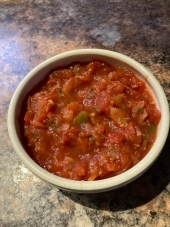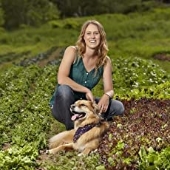I am on Vancouver Island off the west coast of British Columbia, Canada. My 35 x 50 garden has produced food for 40 years, although since the kids have gone on with their lives, I have more flowers and blueberry bushes. I don't grow anything exotic, and many people say carrots are so cheap, why grow them? All I can say is for the taste, just as with tomatoes. My carrots, leek, kale, parsley, and beets stay in the ground most of the year, but I do like to get the carrots and beets out when temperatures drop below freezing. Those beets I miss provide nice greens in the spring, along with the Swiss chard and kale. I get LOTS of raspberries and rhubarb, enough delicious strawberries for myself and the freezer, and the blueberries, well, I love those fresh. I freeze the black currants for winter smoothies, to add tartness to raspberries or blueberries, but I'll perhaps make jelly this year. I stopped eating jams and jellies after the kids were grown, but started again, because I make it for gifts. (I've been cycling out last year's frozen berries for jam.) Potatoes, beans, and squash are must-haves, and sprouting broccoli planted last fall was a delicious treat this spring. I have switched from growing bush beans to pole beans for space.

My question for everyone is how to successfully grow what we in Canada call yams, or the orange-fleshed sweet potatoes to those of you in the States. I want to get away from potatoes (don't eat that many) but I LOVE sweet potatoes (yams.). I'm about 500' above sea level, so my climate is colder in winter, and much drier in summer. I have so far not been successful, even in producing slips, having tried different ways I've read about here on Permies. If anyone can help educate me on that, I would really appreciate it. I do NOT have a greenhouse. I love to tend my garden, but in summer, I want to be on the water in my kayak as much as possible. My life is greatly enhanced by growing my own food, not to mention the food security issues which Covid-19 has highlighted, and while I purchase organic veggies which come mostly from California, there are pretty poor substitutes for what I can grow.








